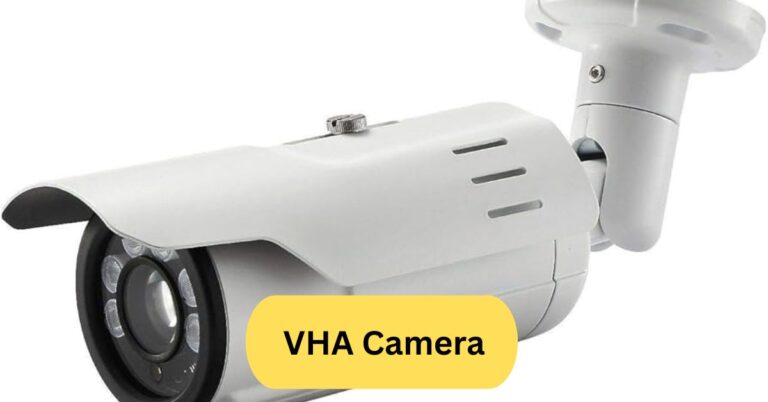
I once tried an Olympus camera on a trip, and I was amazed at how light it felt compared to other cameras. The image stabilization was excellent, letting me take sharp handheld shots even at night, and the colors came out really vibrant without much editing.
Olympus Camera: Olympus cameras are well-known for their compact design, excellent image quality, and advanced features, especially in the Micro Four Thirds system. They are popular among travelers and photography enthusiasts for being lightweight yet powerful.
In this article we discuss about “Olympus Camera”
Table of Contents
Introduction to Olympus Cameras:
Olympus cameras have been an essential part of the photography world for decades. Known for their lightweight bodies, excellent image stabilization, and high-quality lenses, they stand out as a favorite for both hobbyists and professionals.Because Olympus has always pushed toward portability and innovation, its cameras are ideal for both daily photography and travel, in contrast to some brands that place a higher priority on size and bulk.

If you’ve ever struggled to decide between carrying a heavy DSLR or a small smartphone, Olympus cameras strike the perfect balance—professional power in a compact package.
The Legacy of Olympus Cameras:
1. The Origin of Olympus Corporation:
Olympus was founded in 1919 in Japan, initially focusing on microscopes and optical devices. Their expertise in precision optics eventually led them into photography.
2. Transition from Film to Digital:
The company gained worldwide recognition with models like the Olympus OM-1 in the 1970s, which became a classic film camera admired by photographers. Later, Olympus pioneered digital and mirrorless technology, adapting faster than many competitors.
3. Olympus’s Role in Innovation:
Olympus has always been known for innovation—from compact film cameras like the Trip 35 to the modern 5-axis image stabilization system, which is still considered one of the best in the industry.
Types of Olympus Cameras:
1. Olympus DSLR Cameras:
DSLRs were formerly manufactured by Olympus using the Four Thirds technology. Despite their success, they eventually switched entirely to mirrorless systems in order to concentrate on portability and cutting-edge capabilities.
2. Olympus Mirrorless Cameras:
The flagship series, like OM-D and PE-N, is highly popular. They use the Micro Four Thirds sensor format, offering smaller bodies while maintaining professional-grade performance.
3. Olympus Compact Cameras:
Perfect for beginners, compact Olympus cameras provide simplicity with good image quality. While not as advanced as mirrorless models, they’re easy to use for everyday photography.
4. Vintage Olympus Film Cameras:
The Olympus OM series and the Trip 35 are legendary. Many photographers still collect these for their mechanical precision and classic design.
Key Features of Olympus Cameras:
1. Lightweight and Compact Design:
Olympus is the go-to brand for photographers who want mobility without compromise. For instance, carrying an OM-D is much easier than lugging a heavy full-frame DSLR.
2. Image Stabilization Technology:
Olympus pioneered 5-axis in-body image stabilization (IBIS). This allows photographers to shoot handheld in low light without blur—a game changer for travel and street photography.
3. Superior Lenses (Zuiko Series):
Olympus lenses, known as M.Zuiko, are praised for their sharpness, color reproduction, and affordability. Whether wide-angle or telephoto, they deliver impressive results.
4. Weather-Sealed Durability:
Many Olympus cameras are dustproof, splashproof, and freezeproof, making them ideal for adventurers who shoot in extreme conditions.
5. User-Friendly Interface:
Olympus designs cameras with intuitive menus and controls, ensuring both beginners and professionals feel comfortable.
Popular Olympus Camera Models:
1. Olympus OM-D Series:
Models like the E-M1 Mark III and E-M5 Mark III offer professional features in compact bodies, with excellent autofocus and stabilization.
2. Olympus PEN Series:
Known for their stylish, retro look, the PEN series appeals to vloggers and lifestyle photographers who want performance and aesthetics.
3. Olympus Tough Series:
The TG-6, designed for adventurers, is ideal for trekking, skiing, and snorkeling because it is freezeproof, shockproof, and waterproof.
4. Legendary Olympus OM Film Cameras:
The OM-1 remains a collector’s favorite, admired for its build quality and timeless design.
Why Choose Olympus Cameras?
1. Portability and Travel-Friendly Design:
Olympus cameras are compact yet powerful—ideal for travelers who don’t want heavy gear.
2. Professional Quality at an Affordable Price:
Compared to brands like Canon or Sony, Olympus often provides similar performance at lower costs, making it an excellent value.
3. Perfect for Beginners and Enthusiasts:
Their user-friendly design means you don’t need to be a pro to capture stunning images.
Olympus vs Other Camera Brands:

1. Olympus vs Canon:
Canon offers a wide lens ecosystem, but Olympus is unbeatable for travel and portability.
2. Olympus vs Nikon:
Nikon dominates in DSLRs, but Olympus leads in mirrorless innovation.
3. Olympus vs Sony:
Sony’s full-frame mirrorless cameras are powerful but bulky and pricey, while Olympus remains compact and adventure-ready.
The Future of Olympus Cameras:
1. Shift to OM System (OM Digital Solutions):
In 2021, Olympus sold its camera division to OM Digital Solutions, now rebranded as OM System. Despite the change, they continue developing new models.
2. Innovations Expected in Mirrorless Technology:
As OM System continues Olympus’ history, expect better autofocus, AI-driven features, and even lighter bodies.
Photography with Olympus Cameras:
1. Travel Photography:
Lightweight and weather-sealed, Olympus is perfect for explorers capturing cityscapes, landscapes, and cultural shots.
2. Wildlife Photography:
With long telephoto lenses and fast AF, Olympus is great for bird and wildlife photography.
3. Street Photography:
Compact designs let photographers capture candid moments without drawing attention.
4. Underwater Adventures:
The Olympus Tough series thrives underwater, perfect for divers and snorkelers.
Tips for Using Olympus Cameras:
1. Best Settings for Sharp Photos:
Use stabilization wisely, keep ISO low, and adjust shutter speeds based on light.
2. Choosing the Right Olympus Lens:
For landscapes, go wide (12-40mm).. For portraits, pick the 45mm f/1.8. For wildlife, telephoto zooms like 300mm f/4 are ideal.
3. Extending Battery Life:
Mirrorless cameras drain power quickly—carry extras, turn off Wi-Fi when not in use, and lower LCD brightness.
Accessories for Olympus Cameras:
1. Lenses and Converters:
M.Zuiko lenses expand possibilities, from macro to ultra-wide.
2. Camera Bags and Straps:
Compact designs need lightweight bags to make travel easy.
3. Tripods and Stabilizers:
Pairing Olympus IBIS with a tripod makes long exposures effortless.
How to Maintain an Olympus Camera:
1. Cleaning the Lens and Sensor:
Use microfiber cloths and air blowers—never touch the sensor directly.
2. Protecting Against Weather Damage:
Even weather-sealed cameras benefit from extra rain covers.
3. Regular Software Updates:
Olympus firmware updates often improve autofocus and add new features.
Getting Photos Off an Olympus Camera:
1. Using USB or Memory Card Reader:
Plug-and-play via USB or SD card for quick transfers.
2. Wireless Transfer Options:
The Olympus Image Share (OI.Share) app allows easy transfer to phones.
Common Questions About Olympus Cameras:
1. Are Olympus Cameras Discontinued?
Not discontinued—rebranded as OM System but still producing cameras.
2. Do Professionals Still Use Olympus?
Yes, especially travel and wildlife pros who need lightweight gear.
3. Are Olympus Cameras Worth It in 2025?
Definitely—compact, powerful, and great value.
Olympus Camera Digital:
Olympus digital cameras are known for their compact design, high-quality imaging, and mirrorless technology, making them popular among travel and hobby photographers.
Olympus Camera price:
Olympus camera prices vary depending on the model, ranging from around $300 for entry-level digital cameras to over $1,500 for advanced mirrorless models.
Olympus camera OM-D:
The OM-D series features mirrorless cameras with retro design, excellent image stabilization, fast autofocus, and superior low-light performance.
Olympus Camera Film:
Olympus also produced classic film cameras, renowned for their durability, precise optics, and vibrant color reproduction.
Olympus Camera Battery:
Olympus cameras use rechargeable lithium-ion batteries, which generally offer several hundred shots per charge, depending on the model.

Olympus camera website:
The official Olympus website provides detailed product information, support, and software downloads for all their cameras and accessories.
Olympus Camera Vintage:
Vintage Olympus cameras, like the OM and PEN series, are popular among collectors for their classic design, mechanical precision, and high-quality lenses.
Frequently Asked Questions:
1. Are Olympus cameras discontinued?
Olympus sold its camera division in 2020 to OM Digital Solutions, which continues to make cameras under the OM System brand, so they are not fully discontinued.
2. Do Olympus make good cameras?
Yes, Olympus cameras are known for excellent image stabilization, compact designs, and great color science, making them ideal for travel and everyday photography.
3. Why aren’t Olympus cameras more popular?
They’re less popular because Olympus uses the Micro Four Thirds system, which some professionals see as less powerful compared to full-frame cameras, even though they’re very capable.
4. What are the 4 main types of cameras?
The four main types are DSLRs, mirrorless cameras, compact/point-and-shoot cameras, and action cameras.
5. What camera does Taylor Swift use?
Taylor Swift has been spotted using a Fujifilm Instax instant camera for fun, and professional photographers often capture her with high-end DSLRs and mirrorless cameras.
6. How to get photos off an old Olympus camera?
You can transfer photos by using a USB cable, inserting the memory card into a card reader, or connecting via Olympus software if supported.
7. What is the most popular camera used by photographers?
Many professional photographers use Canon and Nikon DSLRs or Sony mirrorless cameras, depending on their style and needs.
8. What are old cameras called?
Old cameras are often called film cameras, vintage cameras, or analog cameras.
9. What is the difference between SLR and DSLR?
An SLR (single-lens reflex) uses film to capture images, while a DSLR digital single-lens reflex) uses a digital sensor instead of film.
10. What is a DSLR?
A DSLR (Digital Single-Lens Reflex) camera is a digital camera that uses a mirror and prism system, offering interchangeable lenses, manual controls, and high image quality.
Conclusion:
Olympus cameras, now under the OM System brand, continue to deliver compact, innovative, and high-quality imaging solutions. From vintage film models to modern mirrorless systems, they balance portability with professional performance. Ideal for travelers, hobbyists, and adventure photographers, Olympus combines durable design, advanced features, and user-friendly interfaces. Despite niche popularity, their cameras remain a reliable choice for capturing stunning photos in any environment.




